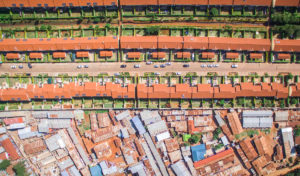Inequality
“At first countries’ incomes were all bunched together, but with the Industrial Revolution the differences exploded, and the countries have “flown” further apart from each other. . . . [it] pushed some countries forward onto the path to higher incomes while others stayed at the point where they had been for millennia. . . . Global inequality has been rising, first quickly, then more slowly, but nearly uninterrupted since the Industrial Revolution.”
Branko Milanovic
Cambridge dictionary defines inequality as the unfair situation in society when some people have more opportunities, money, etc. than other people.
Economically speaking, inequality refers to the unfair distribution of resources and opportunities among different members of a system or society. It may be a result of the member’s race, gender or etc. Economists categorize inequality in many subcategories, however, the two most important are income inequality and wealth inequality.
Income equality, as its name suggest, is about the unequal distribution of income among a society. One must consider that income includes all sorts of revenue ‘streams’ from different sources such as salary, the interest you gain from putting your money in a savings account or any other profits that you may make.
Wealth, as we know it, consists of assets minus liabilities, it is also known as net worth. So houses, investments, jewelries, cars or any other valuable items all count as wealth. When we talk about wealth inequality, we are referring to the unequal distribution of such assets among a certain population.
There are some specific ways to measure income inequality. For instance, Palma Ratio, is measured by dividing the income of the richest 10% of a society over the poorest 40% of that society. The less the Palma Ratio, the more equal the society is. There are other methods to measure inequality of income such as the 20:20 ratio and the Hoover Index.
One of the best and most famous ways to measure both the income inequality and wealth inequality is the Gini Index.
In a broader perspective, inequality can been categorized into five different types:
- Political Inequality
- Outcome Inequality
- Inequality of Opportunity
- Treatment Inequality
- Inequality of Membership
However, inequality still remains as a controversial topic. Some believe that inequality is not necessarily a bad thing, it motivates entrepreneurs and hard-working. On the other hand, many argue that inequality may stop the poor from giving their children proper schooling and educational services so that may be able to climb the social and economic hierarchy in their own lives.
Also Watch
Further reading
World inequality report 2018: Executive Summary
Identifying and measuring economic discrimination
Wealth inequality is soaring – here are the 10 reasons why it’s happening
These five charts show that however you measure it, wealth inequality is a global issue
Wealth, inequality, and the ‘Me? I’m not rich!’ problem
Research: How the Financial Crisis Drastically Increased Wealth Inequality in the U.S.
Wealth inequality keeps widening. But it’s nothing new
The many ways to measure economic inequality
Unequal Scenes: Photography Project

